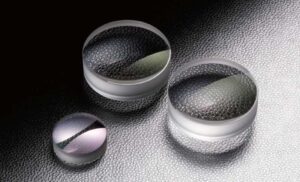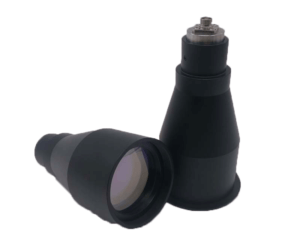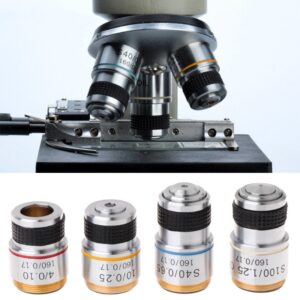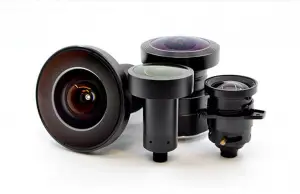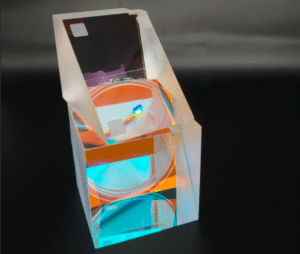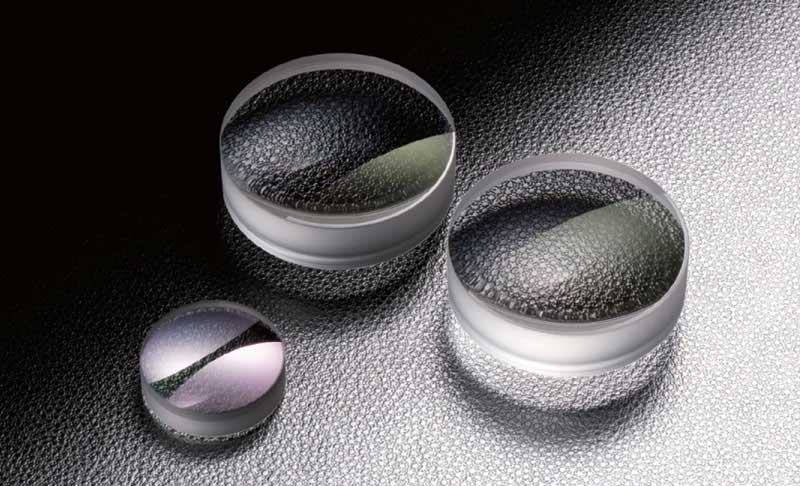1. Introduction
When choosing optical systems — whether for telescopes, microscopes, or precision imaging — you’ll often encounter two terms: achromatic and apochromatic. These refer to lens designs that correct chromatic aberration, a common optical problem where colors fail to focus at the same point.
In this guide, we’ll break down apochromatic vs achromatic designs, explore how they differ in performance, and explain when each is the right choice for your optical application.

2. What Does “Apochromatic” Mean?
Apochromatic meaning:
The term apochromatic comes from Greek roots: apo (away) and chroma (color). An apochromatic lens is designed to bring three wavelengths of light (typically red, green, and blue) to the same focal point. This advanced correction minimizes both axial and lateral chromatic aberration, providing superior image sharpness and color fidelity.
A typical apochromatic objective lens achieves this by combining three or more optical elements made from special low-dispersion glasses such as fluorite (CaF₂) or synthetic equivalents.
Key benefits of apochromatic lenses:
- Minimal chromatic aberration
- High contrast and color accuracy
- Sharper imaging at wide apertures
- Preferred for high-end telescopes, cameras, and microscopy

3. What Is an Achromatic Lens?
Achromatic lenses were the first major solution to chromatic aberration, invented in the 18th century. They are designed to bring two wavelengths (typically red and blue) to a common focus.
An achromatic doublet typically combines a positive crown glass element and a negative flint glass element. Together, they balance dispersion and focus two colors at the same point, significantly reducing color fringing compared to simple singlet lenses.
Common examples:
- Achromatic telescopes (or achromatic refractor telescopes)
- Achromatic microscope objectives
- Entry-level imaging systems
Advantages:
- Excellent balance between cost and performance
- Effective for most visible-light applications
- Easy to manufacture in large quantities
However, achromatic lenses still leave a small amount of residual color error (secondary spectrum), which becomes visible in high-contrast imaging or wide spectral range applications. Coating Machine
Coating Machine
4. Apochromatic vs Achromatic: Key Differences
Here’s a quick comparison of the two designs:
| Feature | Achromatic Lens (Doublet) | Apochromatic Lens (Triplet or Multi-element) |
|---|---|---|
| Color Correction | 2 wavelengths (typically red & blue) | 3 wavelengths (red, green & blue) |
| Lens Elements | 2 (crown + flint) | 3 or more (often includes fluorite) |
| Chromatic Aberration | Reduced, but still visible | Nearly eliminated |
| Image Sharpness | Good | Excellent |
| Cost | Lower | Higher |
| Applications | Entry-level telescopes, general optics | High-end imaging, research, photography |
| Typical Structure | Achromatic doublet | Apochromatic triplet |
In summary:
- Achromatic = basic chromatic correction, affordable.
- Apochromatic = superior correction, premium performance.

Inspecting by Spectrophotometer Agilent
5. Apochromatic vs Achromatic Telescopes
Achromatic refractor telescopes use doublet lenses that focus two wavelengths of light at the same point. They deliver bright, sharp images but may show slight color fringing around bright objects like the Moon or planets.
Apochromatic refractors, on the other hand, use triplet or quadruplet lens designs to focus three wavelengths precisely. This results in:
- Virtually zero color fringing
- Higher contrast
- Better correction for spherical aberration
Astronomers often prefer apochromatic refractor telescopes for astrophotography and detailed planetary observation, despite their higher price.
Example:
A 100mm apochromatic triplet telescope may cost twice as much as an achromatic doublet, but its optical clarity and true-color rendering make it indispensable for serious imaging. Inspecting by Interferometer ZYGO
Inspecting by Interferometer ZYGO
6. Apochromatic vs Achromatic Objectives in Microscopy
In microscopes, the distinction between achromatic vs apochromatic objectives is just as important.
- Achromatic objectives correct for red and blue light and flatten the field slightly. They are ideal for basic laboratory or educational microscopes.
- Apochromatic objectives correct for three or more colors and minimize spherical aberration, giving razor-sharp images under high magnification — essential for research, industrial inspection, and digital imaging.
If your work requires precise color reproduction or high numerical aperture performance, apochromatic objectives are worth the investment.
7. Apochromatic Doublet vs Triplet
Some apochromatic lenses use doublet designs with advanced glass types, while others use triplet designs for even greater correction.
| Design | Description | Performance |
|---|---|---|
| Apochromatic Doublet | Two elements using special ED (Extra-low Dispersion) or fluorite glass | Excellent correction with lighter weight |
| Apochromatic Triplet | Three elements, typically including fluorite | Outstanding correction, ideal for professional imaging |
Bote Optics offers custom apochromatic triplet designs using premium materials to achieve tight wavelength control from visible to infrared ranges.
8. Which One Should You Choose?
Choosing between achromatic and apochromatic optics depends on your application:
| Application | Recommended Lens Type |
|---|---|
| Educational or entry-level telescope | Achromatic refractor |
| Professional astrophotography | Apochromatic triplet |
| Industrial inspection | Apochromatic objective |
| Cost-sensitive imaging system | Achromatic doublet |
| High-end precision optics | Custom apochromatic from Bote Optics |
If your project demands exceptional precision, low dispersion, and high contrast — apochromatic optics are the superior choice.
9. Custom Optical Solutions from Bote Optics
At Bote Optics, we specialize in the design and manufacturing of custom optical components, including:
- Apochromatic triplet and doublet lenses
- Achromatic objective assemblies
- Sapphire, Germanium, and Zinc Selenide windows
- Infrared and visible optical coatings
Our engineering team supports clients worldwide with custom lens design, prototyping, and volume production — all backed by precision testing and strict quality control.
If you need a custom apochromatic objective lens or want to discuss achromatic vs apochromatic design optimization, contact us at www.bote.com.sg/contact.
10. Frequently Asked Questions (Q&A)
Q1: What is the main difference between achromatic and apochromatic lenses?
A: Achromatic lenses correct two wavelengths of light, while apochromatic lenses correct three, providing better color correction and image sharpness.
Q2: Are apochromatic telescopes worth the higher price?
A: Yes, for advanced users or astrophotographers, the superior color correction and image clarity make them an excellent investment.
Q3: What materials are used in apochromatic lenses?
A: Fluorite (CaF₂), ED glass, or other low-dispersion materials to minimize chromatic aberration.
Q4: Can achromatic lenses be used in infrared systems?
A: Yes, but they must be designed with materials transparent in the infrared range. Bote Optics provides customized IR achromatic designs.
11. Conclusion
The debate between apochromatic vs achromatic optics comes down to performance versus cost. Achromats are practical and affordable, while apochromats deliver unmatched precision and color correction.
Whether you need a custom achromatic doublet for a standard imaging system or a high-end apochromatic triplet lens for scientific applications, Bote Optics can provide tailored solutions with exceptional optical performance.
Related Reads:
- What Is Interferometry?
- High-Precision IR Filters | Custom Infrared Bandpass Filters for Optical Systems
- Spherical vs Aspherical: Optical Design Tips
Boost your optics performance with custom aspheric lenses—engineered for precision, designed for excellence.

